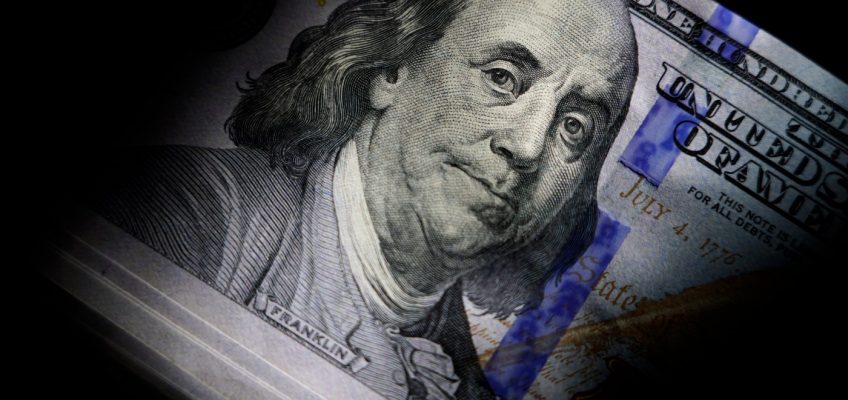The political realignment has come for economics. At least since the days of Friedrich Hayek and John Maynard Keynes in the last century, the divide in economic thinking roughly corresponded to the political split. In the mainstream, everyone was a capitalist and saw some role for government. The right/left divide was mostly over exactly how big that role should be.
Now, in economics as in politics, it is no longer left versus right; it is moderates versus populists. The question isn’t so much the optimal size of government in a global market-based economy, it is whether the economy is positive or zero-sum and how it entrenches power.
The result is unlikely allies and enemies. The horseshoe theory of politics holds that extreme left and right partisans agree more with each other than they do with the centrists in their party. That theory now also applies to economics.
A decade and a half ago, economists and policy wonks were divided on things that in retrospect seem quite small — the structure of the Affordable Care Act, for example. More and more lately, I struggle to find disagreement with center-left economics pundits who used to make me shake my head.
It could be that we are all moderating with age. But I don’t think so. It’s that the conversation has changed. The debate is increasingly about questions we moderates have long seen as resolved, such as whether price controls work (no), globalization is a good thing (yes), or growth should be the primary objective (of course).
These questions are being revisited because populists have become a much bigger and more influential force in U.S. politics and policy — and as they do, centrists find that we have more in common with each other than the more extreme wings of our respective camps.
It’s not just me. Ezra Klein recently described a divide in the Democratic Party over the so-called “abundance” agenda, which argues that getting many regulations and special-interest groups out of the way can unlock more growth. So-called “abundance liberals” argue that, with the right policies, the government can increase economic growth and make everyone better off.
The more populist wing of the Democratic Party rejects this approach, because it sees the real problem as power. It has a more zero-sum view of the economy, in which the powerful (usually corporations and the rich) take most of the limited resources everyone should be entitled to.
I am closer to abundance liberals (let’s make a bigger economic pie) than I am to populist liberals (let’s make sure the pie slices are exactly even). I also support getting rid of wasteful regulations and favors to special-interest groups. The difference is that I think these barriers need to be removed to empower the private sector, not the government, to drive growth. This is not a trivial difference, and someday it will probably tear our fragile alliance apart. But for now, compared to the alternative, it feels semantic.
Conservatives are facing a divide similar to the one Klein describes among liberals. The populist strain of the right also sees the world as zero-sum and condemns the concentration of power — not of the rich, but among foreigners and institutions: universities, technology firms, government bureaucracies, international agencies, and so on.
President Donald Trump’s administration reflects this division. Its economic team includes representatives from the more traditional pro-growth wing of the Republican Party, with trained economists and people who worked in finance, as well as people from the more populist zero-sum wing, dominated by Yale Law graduates and their fellow travelers.
This realignment will shape America’s economic discourse and policies for the foreseeable future. Rather than a right/left divide on the role of government, the main debate going forward will be between centrists and populists.
One side is united by our love for a more efficient tax code and our desire to reduce regulations that favor special-interest groups, as well as our enthusiasm for growth. The other is obsessed with fighting powerful forces they say are preventing people from thriving in a world of increasingly scarce resources.
It is not clear to me how all this ends. If the post-Trump Republican Party reverts to economic centrism, then it may win over some old center-lefties, especially if the Democrats choose to pursue a more populist agenda. Or the reverse could happen: Democrats could run a centrist in 2028 and win over many disaffected center-right free-market types.
Another possibility is that both parties go populist, leaving us disaffected centrists to huddle together in the political and policy wilderness. Zohran Mamdani’s victory in last month’s New York mayoral primary suggests that left-wing economic populism still has room to grow.
What is clear is that populists are gaining more influence for a reason, and it is important to engage them and their ideas. We centrists had a good run. Now we need to work harder to understand why fewer people find our arguments persuasive.
Allison Schrager is a Bloomberg Opinion columnist covering economics. A senior fellow at the Manhattan Institute, she is author of “An Economist Walks Into a Brothel: And Other Unexpected Places to Understand Risk.”
Related Articles
Ross Douthat: Conservatives are prisoners of their own tax cuts
Barnett, Kristof: It isn’t freedom if it’s not for everyone
Thomas Friedman: How Trump’s ‘big beautiful bill’ will make China great again
Kristof, Barnett: The quiet girls’ revolution in west Africa
Lisa Jarvis: RFK Jr.’s vaccine panel is turning misinformation into policy




